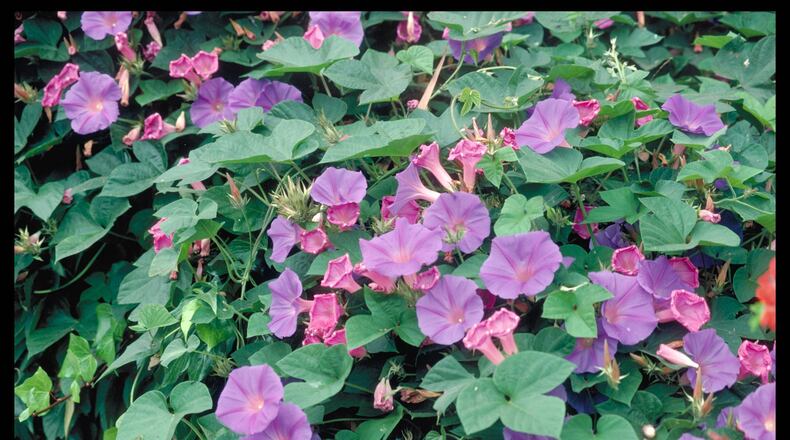Morning glories are native to Mexico, so this is where we discover the ethnobotany of the dangerous plant. It will explain why it’s best to avoid planting them unless you can be sure they are completely frost killed each winter to prevent potential invasiveness.
According to an early Spanish writer, Aztec priests used morning glories known as tlitliltzin to elicit visions for divination rituals. The rituals involved a shaman who consumed the plants to reach the spirit world to learn truths or foretell the future. No doubt many of such rituals were performed in Tenochtitlan as news of Cortez was brought from the coast. To this day Nahuatl priests as well as Zapotec shamans continue these practices.
Such history proved there is something very potent inside morning glory vines. While the rituals involved eating the seeds, it’s likely the same alkaloids are present in lesser extent throughout the plant. Chemical analysis proved these were very similar to LSD, which led Abbey Hoffman to personally experiment with ingesting them to prove the effects on the human brain were similar to that of his well known work on LSD-25.
He’d later write, “It turned out that the new demand derived from hippie circles and other groups interested in hallucinogenic drugs. They believed they had found in the ololiuhqui seeds a substitute for LSD, which was becoming less and less accessible. The morning glory seed boom, however, lasted only a comparatively short time, evidently due to unpleasant experiences with this ‘new’ inebriant.”
Personal experience has proven that the vines can also cause transdermal poisoning. When gardening in the heat, pores are open to sweat and the morning glory bleeds heavily when cut or torn. When the sap lands on your skin it is taken in just like it does with a pharmaceutical medicine patch. The longer you work with the vine the more you’ll absorb without knowing it. Eventually migraine headache-like visual distortions begin, and that is how you’ll know you’re in trouble.
In Mexico folks know about these vines, but we see them as simply seed-grown grandmother’s garden flowers. Truth is they are anything but that. Imagine a child playing hide and seek within a morning glory shrouding plants. Perhaps a puppy might be drawn to flowers in the morning when bright and fragrant. Maybe you’re barefoot and step on the thin vines without realizing it. There are dozens of ways a gardener can experience transdermal morning glory without any knowledge of the risks.
When removing morning glory, wear long sleeves, safety glasses and leather or rubber gloves. Avoid doing so in high heat of summer. Consider spraying plants with herbicide, then wait until dead and dry before removing a large patch.
Every gardener in America should know this about morning glory vines. Yes, they are potent and toxic ethnobotanicals that figure into Aztec religions. Seed catalogs never told grandma about this infamous history. But maybe she learned the hard way with a sick headache at the end of a morning glory removal day and never knew what caused it.
———
Maureen Gilmer is an author, horticulturist and landscape designer. Learn more at www.MoPlants.com
About the Author
